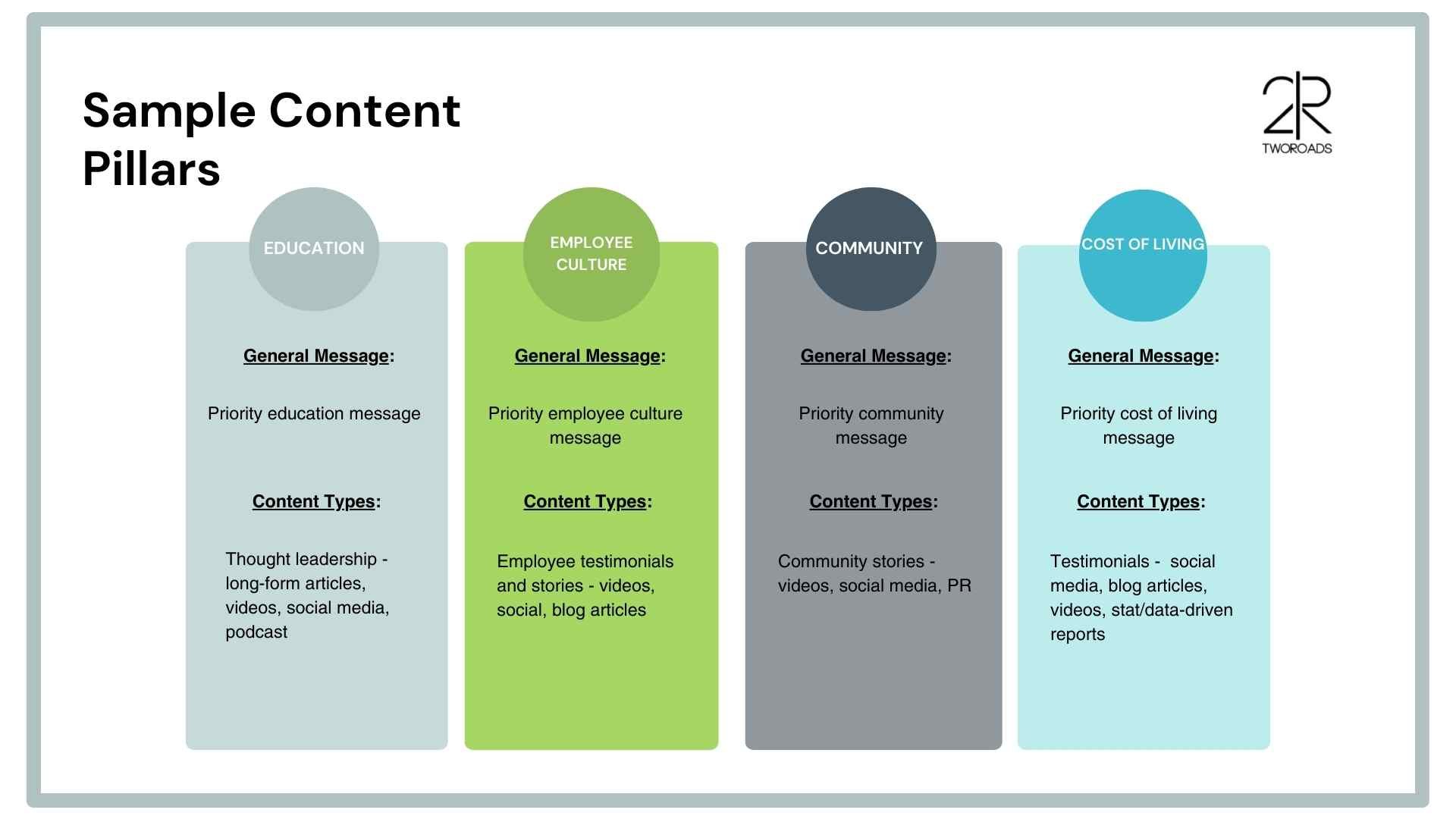How to Use Content Pillars to Set Your Nonprofit Content Strategy on Solid Ground
Posting on social media is not a content strategy. Neither is getting that long-awaited blog post up on your website or finally hitting send on your donor newsletter.
It’s easy to boil nonprofit content marketing down to tactics. Especially for scrappy nonprofits with small budgets and even smaller teams; getting content out the door is truly a win.
Having a content strategy is the only real way to shift from sporadic posting to producing thoughtful, goal-driven content that moves you closer to your mission.
But knowing you need a content strategy and actually creating one are two very different things.
That’s why this month, I’m excited to take over the Beam Consulting blog to introduce more nonprofit leaders to the beauty of Content Pillars and how they can refocus and supercharge every piece of content you create.
First Things First: What are Content Pillars?
Content pillars are categories of content that serve as the foundation of your brand’s content marketing strategy. Every social media post, blog article, email newsletter - any piece of content your nonprofit creates and shares - should connect back to at least one content pillar.
Think of content pillars as the bridge connecting your marketing strategy to the content you produce.
Here’s the key. Content pillars must derive from: your organization’s long-term goals, its story, and its mission. Together, a set of content pillars should connect all three and collectively communicate an organization’s value to its community.
To break this down, here’s an example of a sample set of content pillars.
I always recommend a minimum of three pillars with no more than five. This sample organization identified four content pillars: education, employee culture, community, and cost of living. Collectively, these pillars reflect this organization’s goals, story, and mission.
Within Each Pillar Lives Your Brand’s Messaging
Once you’ve determined your 3-5 pillars, it’s time to break down each one further into messaging themes.
Your messaging themes inform “what will you say and how will you say it.”
From there, think through the best way to share each message. In the above example, this organization identified education as a core component of its mission, story and goals. To share its education message, it will develop thought leadership content as long-form articles, videos, social media content, and a podcast.
How to Identify Your Nonprofit’s Content Pillars
Getting started begins by dusting off your most recent strategic plan and marketing plan. If either document is three years old or more, start the content pillar development process by making sure your plans and strategies reflect the current state and goals of your organization.
From there, identify your organization’s strategic goals and the initiatives and strategies you plan to deploy (or are deploying) to reach those goals.
Now it’s time to connect the dots.
With a holistic picture of where your goals, story, and mission intersect, think through 3-5 categories that, when put together, encompass your organization. These are your pillars.
Next, place your message points into the pillars they support. Then, list the type of content you’ll produce to communicate your message in each pillar.
Hopefully, you can start to see the map we’re building. By drilling down from organization goals to marketing strategy to content development, we’re building a content strategy - a system.
A system that tells you exactly what type of content to produce in order for that content to drive your organization toward its mission.
It’s Time to Build Your Content Pillars
Developing your nonprofit’s content pillars is a simple way to refocus your marketing and content strategy and never again have to ask, “What content should I produce?”
I wish you well on your content strategy journey. And remember that as you create your pillars, Beam Consulting is always here to help.
Happy content pillar building!
Beth
About The Author
Beth Meiklejohn, Owner of TwoRoads Strategy, is an experienced marketing consultant, content strategist, and content writer who has represented smart, savvy organizations across a wide array of industries for over 15 years.
She’s supported organizations of all sizes, including nonprofits, small and mid-sized businesses, multinational corporations, and individual influencers at all levels, helping them develop marketing strategies, craft content, and share their story.



